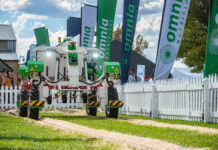The precision farming market is in the introductory growth phase and is expected to grow further due to the growing adoption of global positioning system (GPS), guidance, and remote sensing technologies by farmers/growers.
The precision farming market is expected to grow from USD 8.5 billion in 2022 to USD 15.6 billion by 2030, at a CAGR of 7.9%. The most significant factor driving the growth of the precision farming market is the increasing focus of farmers on enhancing the efficiency of their fields and increasing productivity due to the rising global population and food demand.
Precision farming has the potential to transform the agriculture industry by making traditional farming activities more efficient and predictable.
The high demand for agricultural products due to population growth; increased adoption of VRT, remote sensing technology, and guidance technologies by farmers worldwide; and strong support from governments for promoting the use of precision farming techniques are the other major factors fueling the growth of the market.
However, the high upfront cost of modern agricultural equipment and limited technical knowledge and skills of farmers are expected to restrain the market growth.
The major technologies used for precision farming are smart sensors, GPS, GNSS, auto-steering and guidance technology, and variable rate technology (VRT), among others.
They not only help to reduce the labor cost but also utilize resources in the best possible way and minimize wastage, which is higher in the traditional farming techniques. VRT comprises software, hardware, controller, and a global positioning system, which allows controlling the number of inputs a farmer is applying in a particular location.
The remote sensing technology helps to monitor and manage land, water, and other resources. Similarly, drones are used for spraying, pruning, and weeding applications, as well as capturing high-resolution images to help farmers monitor their farms remotely.
Tasks performed before harvesting, such as weeding, spraying of fertilizers, and site inspections, account for ~50–70% of a farm’s operating expense.
Reducing manual labour costs
In the next 10 years, advanced technologies in precision farming are expected to gain momentum and reduce the need for and costs associated with manual labor.
The world’s population is projected to grow to 9.7 billion by 2050, which means agricultural production must increase by at least 70% to meet nutritional demand. This means that current agricultural practices will need to be improved and new methods of farming and food production will need to be explored.
New technologies, such as vertical farming, hydroponics, and artificial intelligence, will be essential in helping to meet this increasing demand. Increasing pressure on farmers to produce nutritious products puts more strain on our planet’s health than ever before.
Modern agriculture has been transformed completely by new advances in technologies such as robotics and drones, as well as computer vision software.
Investment Scenario in Agriculture Technology
Farm tech startup investments have grown significantly in the recent years, a 370% rise from 2013 reaching USD 4.7 billion in 2019 with 695 deals. The number of mergers and acquisitions (M&A) since 2014 has risen extensively taking it to USD 6.3 billion with 131 M&A transaction activities.
The ag-tech industry is expected to garner additional investments from institutional and strategic investors with the increasing number of players entering this space.
The ag-tech industry is expected to grow in the future and the companies will try to solve the problems of different stakeholders in the value chain such as sustainability, farm-level productivity, resistance to herbicide and pesticide, and the challenging economics of conventional agriculture methods.
Over the past ten years, venture capital investment in the agritech sector has grown consistently, as the chart above shows. In 2020, investment in agritech increased by 45.8% to USD 7.0 billion, up from USD 4.8 billion in 2019. Then, in 2021, it increased by 61.4% to USD 11.3 billion, representing a peak in the investment.








